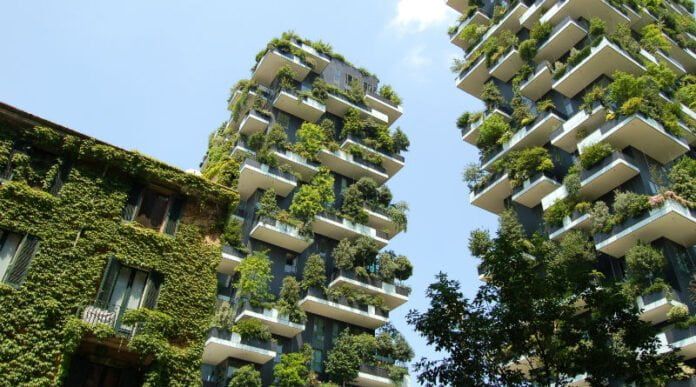Constructing sustainably through net-zero water strategies
Green builders’ effort to minimize the impact their buildings have on the environment must include strategies to use water efficiently. Net-zero water strategies work to do just that.
Although the Colorado population is increasing, and could double over the next 50 years, the water supply is not increasing and may even decrease, according to Gabe Bergeron, an architect at Studio Completiva.
“All the water we have is all the water that’s ever been here and all the water that will ever be here; it’s just changing state,” he said during a session at the Rocky Mountain Green Expo in Denver on Thursday.
He compared net-zero water buildings to a sieve that collects rainwater, uses it where it can and cleans the rest before it’s returned to the original source.
Water efficiency is also energy efficiency. It takes a lot of energy to transport and clean water for people to use, Bergeron said.
Related: Reduce Construction Waste, Increase Efficiency with Modular Building
Like net-zero energy practices, net-zero water building policies facilitate low water use so that occupants use only what is needed, and utilize alternative sources like rainwater.
However, each water type has storage needs, and some collection strategies are inefficient or not allowed, Bergeron noted. For example, “We’re not allowed to collect rainwater at the scale that we would like to. We can’t really filter rainwater toward potable use,” he said.
Bergeron’s team is working on a project for the Sun Valley Eco District Trust, a mixed use development in Denver that will redevelop the Sun Valley neighborhood with a focus on sustainability that he says will be a “new model of development” that looks beyond energy and materials to consider water, local ecosystems and communities in sustainability goals.
The building will provide co-working office space, a multipurpose gallery, meeting spaces, a restaurant, an event center, a raised public park, and a parking garage. Studio Completiva is pursuing a full Living Building Challenge certification for the project, Bergeron said.
Green roofs are an important part of water management because they help collect water and runoff. Katrina Managan, energy efficient buildings lead for the Denver Department of Public Health and Environment, explained what Denver’s green roof initiative, which passed on Nov. 7, requires.
Initiative 300 requires that new buildings of at least 25,000 square feet have a green roof that covers at least 20% of the building, rooftop solar that covers 100% of the building, or a combination of green roof and solar that equals at least 30% of what is required based on the size of the building. The green-roof coverage requirement increases incrementally to 60% required on buildings of 200,000 square feet or more. Roofs on existing buildings must be at least 30% green roof or solar, Managan said. Existing buildings that can’t support the weight of a green roof aren’t required to install them.
“These options don’t work perfectly for every building,” she said.
Managan is on the Green Roofs Review Task Force that is working on a proposal to modify and clarify the initiative that “honor the vote” and preserve the benefits the original initiative aimed to provide.
A draft proposal of the task force’s recommendation was released Thursday. The task force is seeking public comment on the proposal until June 3. Comments can be submitted online or in person at public forums on May 11 and May 14.
Green roofs can aid in water efficiency because they help collect water and runoff.
“People love to fight about water here in Colorado,” Austin Krcmarik, a planner in the efficiency and recycled water group at Denver Water, said. Krcmarik is also on the green roof task force. He said the green roof initiative could increase water demand by 576 acre feet by 2045.
“From a potable side, the overall demand is not necessarily going to be a big impact to our system, but when that demand comes is during the peak of our irrigation season,” Krcmarik said.
Green roofs should be treated differently from landscapes, especially from a fire code standpoint, Krcmarik said. Also, back flow preventers are typically required when water leaves a building for irrigation.
“Since this is on a building, we need to make sure that that same backflow preventer is in place so that none of the water that’s going to irrigation ends up back inside the building.”








